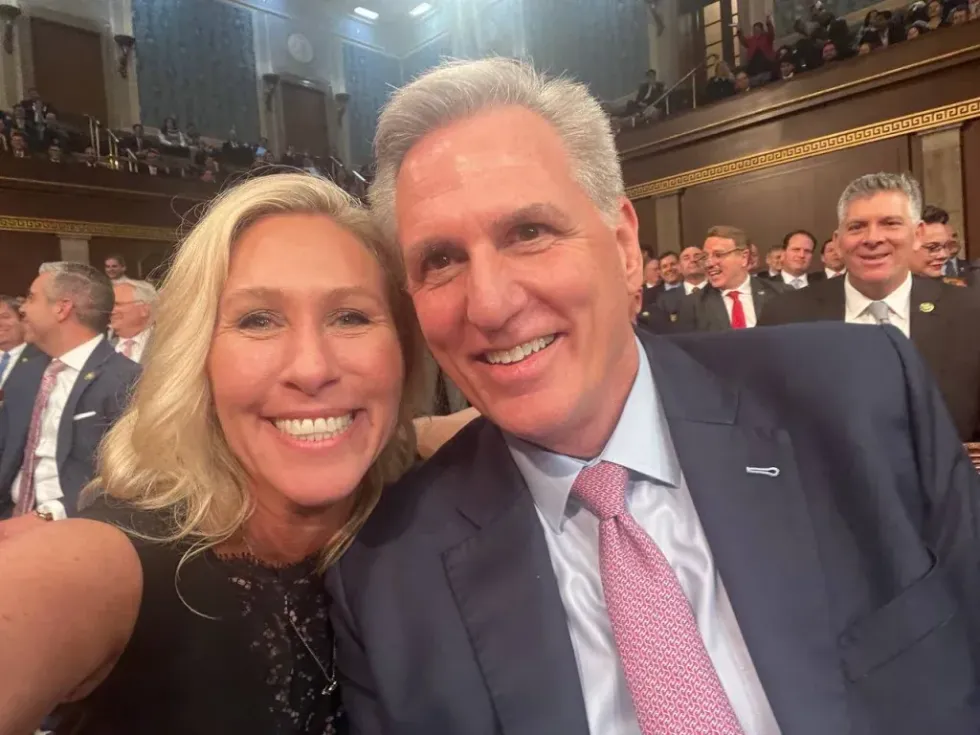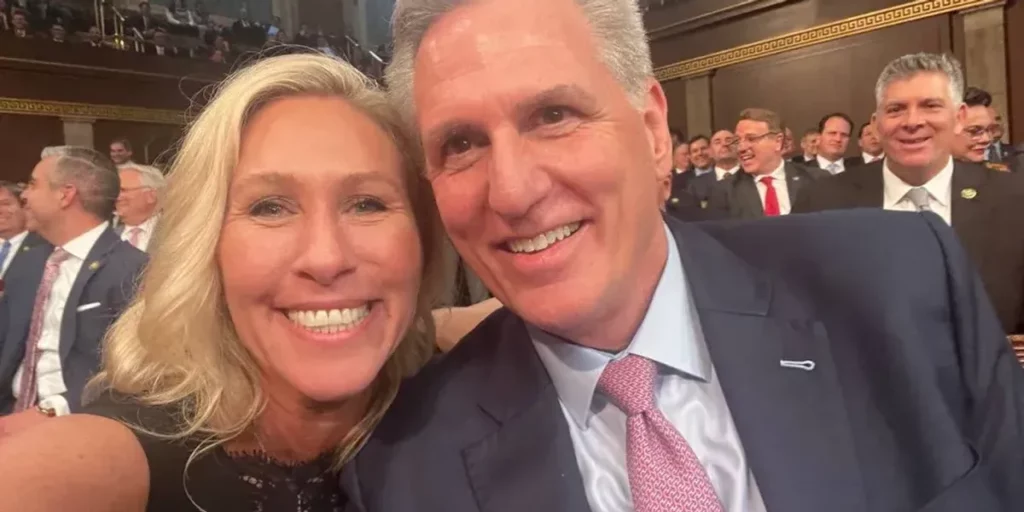
Treasury Secretary Janet Yellen just announced that the federal government will hit the limit on total federal debt on January 19, just two days from now.
After that, the Treasury Department will be forced to take “extraordinary measures” to avoid defaulting on the debt, which would likely trigger a global financial crisis.
Congress could defuse this bomb by simply raising the debt limit, as it has dozens of times under presidents of both parties for decades. But the MAGA radicals now in control of the House of Representatives are refusing to raise the debt ceiling unless President Biden agrees to devastating cuts to Social Security, Medicare, and other key programs.
I was involved in a similar fight over the debt ceiling fight twenty-eight years ago, which holds some lessons for what happens now.
In November 1995, Republicans refused to raise the debt ceiling unless Bill Clinton agreed to a package of sweeping spending cuts, welfare overhaul, restraints on Medicare and Medicaid growth, and a balanced budget within seven years.
I and other Clinton advisers urged him not to negotiate. Even if the public didn’t understand that the debt ceiling had less to do with the nation’s future debt than with obligations the United States had made in the past, we couldn’t allow the Republicans to hold the economy hostage. The full faith and credit of the United States was at stake. It should not be negotiable.
Clinton agreed. “If they send me a budget that says simply, ‘You take our cuts or we’ll let the country go into default,’ I will veto it,” he said. He called the Republican tactics “economic blackmail,” which they were.
When the Republican House then passed a bill increasing the debt ceiling through December, as well as a continuing resolution that included higher Medicare premiums and other spending cuts, Clinton vetoed both bills. “America has never liked pressure tactics, and I would be wrong to permit these kind of pressure tactics to dramatically change the course of American life,” he said. “I cannot do it, and I will not do it.”
What happened next? The government shut down. And as you may recall, the American public was furious — with the Republicans, who paid dearly in the subsequent midterm elections.
The budget standoff was resolved in early January 1996 but the debt ceiling issue remained. When Treasury Secretary Robert Rubin wrote to Speaker of the House Newt Gingrich that Congress had only until March 1 before the Treasury defaulted on its obligations, Moody’s rating agency announced it was considering downgrading the rating on U.S. Treasury bonds.
Republicans quickly folded, offering to raise the debt ceiling in return for a few modest measures.
The debt ceiling fight of 2011 was different. The Obama administration did negotiate with House Republicans, resulting in the Budget Control Act of 2011. When the debt ceiling had to be raised again in 2013, Obama returned to negotiations. During this standoff, the government was partially closed down. Here again, Republicans took the brunt of the blame.
In these fights, some Republicans presented a fallback position: Instead of raising the debt ceiling, the federal government should prioritize which bills to pay — starting with interest payments to lenders to the United States (holders of federal bonds). That way, they argued, there’d be no technical default.
The idea never went anywhere because such prioritization would still spook credit markets. It would also cause the economy to tank and the stock market to plunge because of the sudden elimination of huge amounts of government spending.
But now, so-called “debt prioritization” is back. According to Friday’s Washington Post, it was part of the secret agreement Kevin McCarthy made with his detractors to support him for Speaker. They agreed that when Republicans hold firm on not raising the debt ceiling, they’ll pass a bill instructing the Treasury to prioritize: 1) first, debt service payments, 2) next, Social Security, Medicare and veterans benefits, and 3) third, military funding.
Everything else would be sacrificed—including critical federal expenditures such as Medicaid, food safety inspections, border control, and air traffic control. The U.S. would be forced to halt payment for as much as 20 percent of money it already promised to spend.
This could be the most economically irresponsible backroom deal in Republican history (even conservative economists are warning that the consequences could include a stock-market spiral and significant job losses).
It’s also the most politically foolish. It would, in effect, put the interest of bondholders — including Chinese lenders to the United States — over the wellbeing of Americans.
As George W. might say, “bring ‘em on.”

